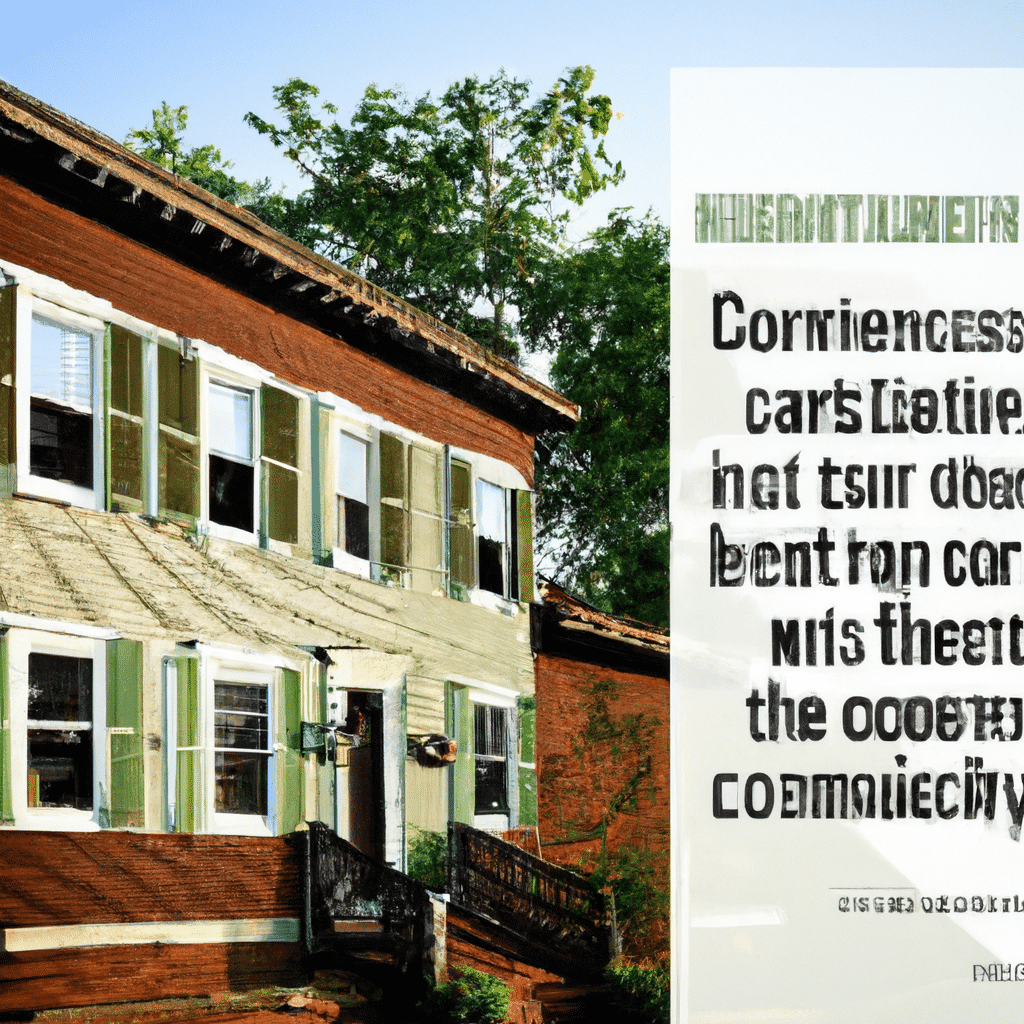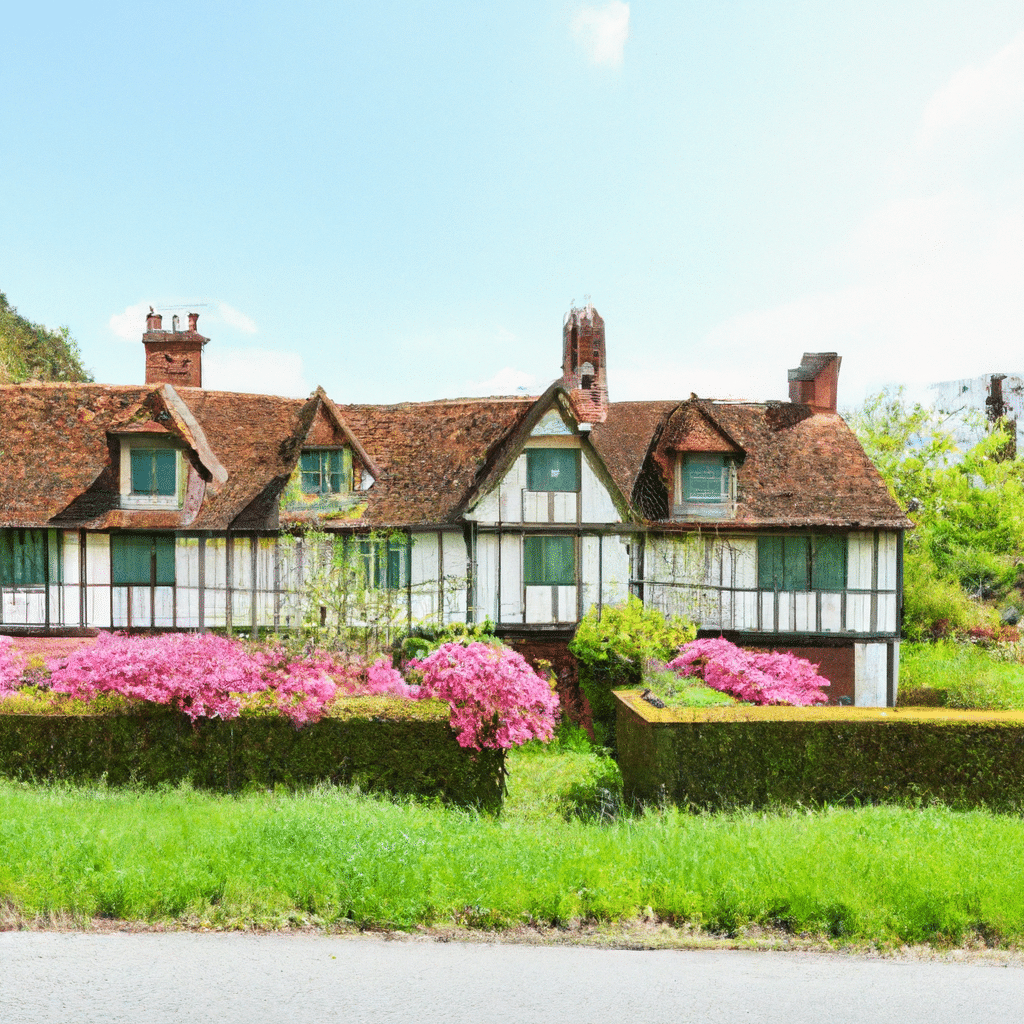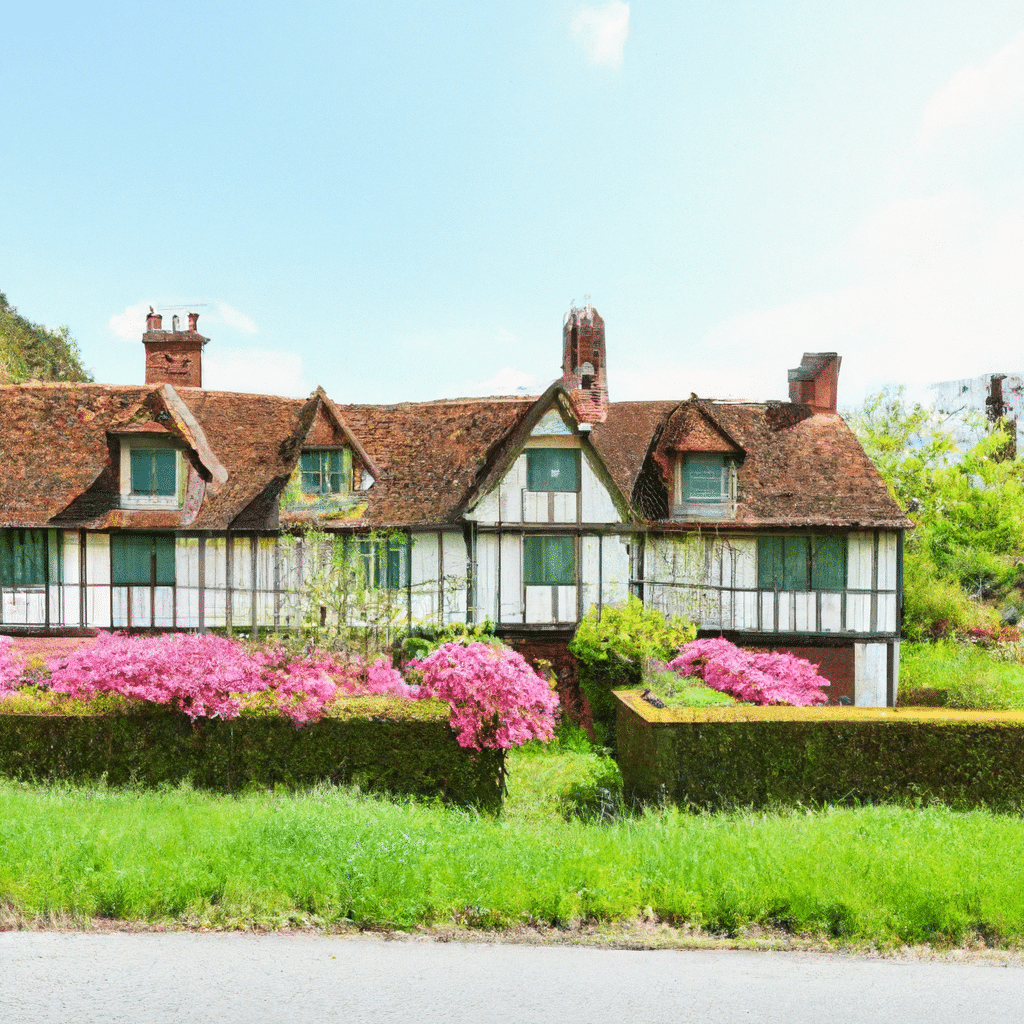In today’s ever-changing world, the concept of longevity often seems elusive, especially when it comes to our built environment. We witness the rise and fall of buildings in a matter of decades, leaving us to ponder the potential lifespan of a house. Can it truly endure the test of time and surpass the staggering milestone of 500 years? Exploring the fascinating realm of architectural endurance, this article delves into the factors that determine a house’s longevity and uncovers the secrets behind structures that stand the test of time.
Understanding the Lifespan of Houses
As a homeowner or someone interested in construction, it is essential to understand the factors that affect the lifespan of a house. A house’s longevity can vary significantly depending on various factors such as building materials, design considerations, environmental factors, construction techniques, and maintenance practices. By understanding these factors, you can make informed decisions that contribute to the long-lasting nature of a house.
Factors Affecting the Lifespan of a House
Several crucial factors can impact the lifespan of a house. One of the most significant factors is the quality and durability of the building materials used. Houses constructed with high-quality and durable materials are more likely to withstand the test of time and require fewer repairs. Additionally, the design considerations, including structural integrity and flexibility, play a vital role in ensuring a house’s longevity. Environmental factors, such as climate, weather, ground conditions, and landscaping, also have a significant impact on how well a house ages. Lastly, the construction techniques employed during the building process can determine the lifespan of a house.
Historical Examples of Long-Lasting Houses
Looking back at history, it is intriguing to observe several long-lasting houses that have stood the test of time. These historical examples serve as inspiration for modern construction practices. One such example is the Kizhi Pogost in Russia, which dates back to the 18th century. Constructed entirely from wood, this remarkable structure has withstood harsh Russian winters and extreme weather conditions for centuries. Another famous example is the Taos Pueblo in New Mexico, which has been continuously inhabited for over a thousand years. These historical houses stand as a testament to the enduring nature of certain construction techniques and materials.
Building Materials for Longevity
When considering the longevity of a house, the choice of building materials is crucial. Durable materials that can withstand the test of time are essential for constructing long-lasting houses.
Durable Materials for Long-Lasting Houses
Several building materials are known for their durability and ability to withstand the elements. For example, traditional materials like stone and brick have been used for centuries and continue to be popular choices due to their strength and longevity. Additionally, modern materials such as reinforced concrete can provide excellent durability when properly designed and executed. When selecting materials, it is important to consider factors such as resistance to rot, decay, pests, and moisture, as these can significantly impact a house’s lifespan.
The Role of Maintenance in Extending a House’s Lifespan
While selecting durable materials is crucial, regular maintenance is equally important in extending the lifespan of a house. Maintenance practices such as regular inspections, cleaning, and repairs can prevent minor issues from developing into more significant problems. This proactive approach can protect the structural integrity of the house and ensure its longevity. Regular maintenance also allows for the identification and resolution of any environmental or aging-related issues that may arise. By investing time and effort into maintenance, homeowners can increase the lifespan of their houses.

Design Considerations for Longevity
In addition to choosing durable materials, the design considerations of a house play a critical role in ensuring its longevity. A well-designed house takes into account factors such as structural integrity, resilience, adaptability, and flexibility.
Structural Integrity and Resilience
Structural integrity is one of the most important considerations when designing a long-lasting house. The house should be built to withstand various stresses, including the weight of the structure itself, environmental factors, and potential impacts. Incorporating proper load-bearing elements, such as beams and columns, ensures that the structure remains stable and intact over time. Resilience is also essential, as it allows the house to flex and absorb external forces without compromising its overall stability.
Adaptable and Flexible Designs
Designing a house with adaptability and flexibility in mind is crucial for its longevity. Adaptable designs can accommodate changes in the homeowner’s lifestyle or evolving needs over time. For example, incorporating open floor plans allows for easy reconfiguration of interior spaces. Flexibility in design enables future modifications or additions without compromising the overall integrity of the house. By considering these design principles, a house can remain relevant and functional for generations to come.
Environmental Factors Impacting Longevity
Various environmental factors can significantly impact the longevity of a house. Understanding and accounting for these factors during the construction and maintenance process can help ensure a house’s long-lasting nature.
Climate and Weather Effects
The climate and weather conditions in which a house is located can have a profound impact on its lifespan. Extreme temperatures, high humidity, heavy rainfall, snow, and strong winds can all take a toll on a house’s structural integrity and overall condition. For instance, houses in coastal areas are often exposed to saltwater corrosion, while those in regions prone to earthquakes must be built to withstand seismic activity. By considering these environmental factors and employing appropriate construction techniques and materials, homeowners can mitigate potential damage and increase their house’s longevity.
Ground Conditions and Landscaping Considerations
Apart from climate and weather, ground conditions and landscaping also play a significant role in a house’s lifespan. Factors such as soil stability, drainage, and landscaping practices can impact the structural stability and water management of a house. Proper grading and drainage systems can prevent water accumulation around the foundation, mitigating potential water damage. Additionally, landscaping choices that consider factors such as tree placement and vegetation selection can prevent root damage and ensure proper airflow around the house, reducing the risk of moisture-related issues.

Construction Techniques for Long-Lasting Houses
The construction techniques employed during the building process can significantly influence the lifespan of a house. By utilizing traditional building techniques and incorporating modern construction innovations, builders can create houses that are built to last.
Traditional Building Techniques
Traditional building techniques have been used for centuries and have proven their longevity. These techniques often utilize durable materials and craftsmanship that have been refined over generations. Examples of traditional building techniques include post-and-beam construction, timber framing, and stone masonry. By drawing inspiration from these techniques and incorporating them into modern construction practices, builders can create houses that are both aesthetically pleasing and built to withstand the test of time.
Modern Construction Innovations
In addition to traditional techniques, modern construction innovations offer new possibilities for creating long-lasting houses. Advanced building materials, such as engineered wood products and composite materials, provide increased strength and durability. The use of prefabricated or modular construction techniques can also contribute to a house’s longevity, as off-site fabrication can result in higher quality control and reduced construction time. Additionally, incorporating energy-efficient and sustainable design features can enhance a house’s lifespan by reducing maintenance requirements and minimizing the impact on the environment.
Preservation and Restoration of Old Houses
Preserving and restoring age-old houses is an essential aspect of architectural heritage and cultural identity. However, there are unique challenges associated with maintaining these houses due to their historical significance and often outdated construction techniques.
Challenges in Preserving Age-Old Houses
Preserving age-old houses presents several challenges, including historical accuracy, structural stability, and availability of traditional materials and skilled craftsmen. Balancing the need for historical accuracy with modern safety standards and building codes can be complex. Structural stability issues often arise due to aging materials, inadequate maintenance, or changes in the surrounding environment. Additionally, finding and sourcing traditional materials and skilled craftsmen for restoration work can be challenging. Overcoming these challenges requires a multidisciplinary approach involving architects, engineers, historians, and preservation experts.
Methods of Restoring and Renovating Historic Houses
Several methods can be employed to restore and renovate historic houses while preserving their cultural and historical significance. Detailed historical research and documentation of the original construction methods and materials are essential. Preservationists often use techniques like selective demolition, careful cleaning, and replication of original details to restore the house’s architectural integrity. In cases where structural integrity is compromised, reinforcing the existing structure while maintaining the historical aesthetic can be achieved through techniques such as steel or timber framing hidden within the original construction. The aim is to strike a balance between preserving the historic fabric and achieving the necessary modern updates and improvements without compromising the house’s uniqueness and character.
Economic and Cultural Benefits of Long-Lasting Houses
Long-lasting houses offer several economic and cultural benefits that extend beyond the individual homeowner. These houses serve as sustainable housing solutions, preserve architectural heritage, and contribute to the cultural identity of a community.
Sustainable Housing Solutions
By constructing long-lasting houses, we contribute to sustainable housing solutions. Houses that are built to last require fewer resources for repairs and renovations, reducing waste and minimizing the carbon footprint associated with construction and maintenance. Additionally, these houses can incorporate energy-efficient design features, such as insulation, solar panels, and efficient HVAC systems, resulting in reduced energy consumption and lower utility bills. Sustainable housing solutions not only benefit the individual homeowner but also contribute to a more sustainable environment for future generations.
Preserving Architectural Heritage and Cultural Identity
Long-lasting houses play a critical role in preserving architectural heritage and cultural identity. Historic houses, such as those found in heritage districts or designated preservation areas, provide a sense of place and reflect the unique history and character of a community. These houses serve as a link to the past, allowing future generations to appreciate and understand their cultural roots. By valuing and preserving these houses, we not only protect our architectural heritage but also contribute to a vibrant and culturally rich community.
Case Studies on Houses with Longevity
Examining case studies of houses with proven longevity provides valuable insights into the factors that contribute to their long-lasting nature.
The Horyuji Temple in Japan
One remarkable example of a house with longevity is the Horyuji Temple in Japan. Built in the early 7th century, this wooden temple complex has survived multiple earthquakes, fires, and other natural disasters. The key to its longevity lies in the use of traditional Japanese construction techniques such as interlocking wooden joinery, without the use of nails. Additionally, the temple has been meticulously maintained over the centuries, with regular repairs and reconstructions performed using traditional methods and materials. The Horyuji Temple stands as a testament to the combination of durable materials, skilled craftsmanship, and ongoing maintenance that can result in a house lasting for centuries.
The Turaida Museum Reserve in Latvia
Another notable example is the Turaida Museum Reserve in Latvia. The Turaida Castle, constructed in the early 13th century, is a remarkable testament to medieval architecture. Despite its age, the castle remains remarkably intact due to ongoing restoration and preservation efforts. Skilled craftsmen and conservationists have worked tirelessly to repair and reinforce the structure using traditional building techniques and materials. By using authentic medieval techniques and materials, they have successfully prolonged the lifespan of this historic house, allowing visitors to experience the rich cultural heritage of Latvia.
Planning for Longevity in Modern House Construction
Incorporating longevity considerations into modern house construction can be achieved through various strategies, including integrating these considerations into building codes and regulations.
Integrating Longevity into Building Codes and Regulations
To ensure that long-lasting houses become the norm rather than the exception, it is important to integrate longevity considerations into building codes and regulations. By requiring specific durability standards, construction practices, and maintenance guidelines, governments and regulatory bodies can promote the construction of houses that are built to last. Additionally, providing guidelines or incentives for the use of sustainable building materials and energy-efficient design features can further enhance a house’s longevity while also contributing to a more sustainable future.
The Future of Long-Lasting Houses
As technology advances and our understanding of construction materials and techniques improves, the future of long-lasting houses looks promising. Innovative materials, such as self-healing concrete and high-performance composites, show great potential in enhancing a house’s lifespan. Similarly, advancements in construction techniques, such as 3D printing and modular construction, offer opportunities for faster, more efficient, and higher-quality construction. By embracing these technological advancements and integrating them with traditional building practices, we can pave the way for even longer-lasting houses in the future.
Conclusion
Understanding the factors that affect the lifespan of houses is essential for homeowners, builders, and preservationists. By considering the choice of building materials, incorporating design considerations for longevity, accounting for environmental factors, employing appropriate construction techniques, and prioritizing maintenance, we can create houses that can last for generations. Long-lasting houses not only provide economic and cultural benefits but also contribute to sustainable housing solutions and the preservation of architectural heritage. By valuing the longevity of houses, we invest in a more sustainable and culturally rich future.
